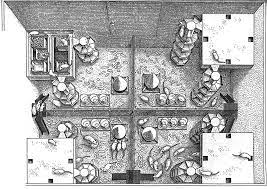The 1970s saw “Universe 25” experiments proved that the long-term viability of any society was just a dream.
With the advancement of technology as well as medicine and an overall improvement in living conditions and food supplies the population of humans on the planet has increased rapidly in the past few centuries. In the 20th century there was a global population explosion that nearly 8 billion humans living on earth in the present. Beyond what some media have claimed about the zero rate of growth, it’s important to be aware that these figures are only for the wealthy area of the world. If we look at the data from a global perspective, which refers to all humanity, we can see that the number of humans is growing and not shrink, as of today. The whole thing has a cascading effect.
The balance of resources and residents isn’t the sole important factor that could lead to a decline in society. Other elements must also be taken into consideration and the primary one of those is the behaviour of people within the community.
Ethnologist John Calhoun, starting from the second half of 1800s conducted a set of studies, involving different rodent populations, to prove that the most important cause of the demise of a society is not just the absence of resources, but also the social dynamics that naturally emerge within the society itself. He described these forces by the name of “behavioral sink”.
In 1947, he began study an entire group of Norwegian mice that were placed in an enclosure. He found that the the animals did not match the desired total. Incredulous the results, he widened his research to understand the factors that determined the block of birth.
John Calhoun then repeated the research in 1962, and subjected another rodent species to gray rats and getting the same results and results as years ago.
The man, therefore, realized that in order to study and examine all aspects of his research it was necessary to build an actual rodent-based society and a perfect society the perfect utopia. So, was the birth of “Universe 25”.
The researcher John Calhoun then set up the perfect environment for four mice. Food sources are unlimited Ideal temperature of 20 degrees, no interactions with threats from the outside, frequent cleaning of the surroundings and sufficient space to hold more than 3,800 mice.
The most healthy specimens offered by the National Institute of Mental Health were chosen, and then placed in a cage with tunnels, nesting areas that are separate and water fountains constantly working. The mice began reproducing and the number of mice doubled each 55-day period. They were ensconced in Eden, the “paradise of Eden” in less than a year , they had reached 600 individuals. At first, everything appeared to be functioning perfectly.
The initial issue that came up concern the social roles established in Universe 25. It was observed that after an amount of specimens had been reached, generational shift did not take place. In lieu, an hierarchical system was established in which every male rodent fought for his position regardless of the risk of threatening the offspring of his.
Females however were forced to stay in different sections of the colony in order to protect their young ones. But this did not stop the increasing aggressiveness that was exhibited by “alpha males”. There were a few instances of violent violence that led to cannibalism, which brought the mortality of pups to up to 96% in the majority of cases. In addition, the inevitable separating of females from males who are aggressive causes a decrease in births because of the inability to reproduce.
The culture that was Universe 25 was pushed towards pansexualism (emotional romantic, romantic, or sexual desire for one’s partner without regard in his sexuality). Additionally an everyday battle routine was created with the primary element, to ensure that one was not excluded by society, was fight and evasion. People who quit fighting, and remained separate from their group was classified by the researcher under the designation of “beautiful ones” since their hair and body was protected from injuries. But, “the beautiful” remained at the margins of society, adrift and confined to eating and isolating them from the rest of society.
The highest amount of specimens predicted at the start of the experiment, which was 3800 specimens, was not reached. A maximum in 2200 specimens attainable and resulted in a sharp decrease.
The number of pregnancies continued to decline in the midst of all the amenities and unending resources. After four years since the beginning of the study at the age of 1973, final mouse in Universe 25 died.
The researcher later identified and defined “the first death”, the one of the social kind, that preceded the the physical one.
A clear and troubling connection to our culture The researcher has uncovered an extremely delicate aspect of our life.
Whatever shrewd man believes he is, when the amount of people who are who can fill a role is far greater than the available roles that results in the demise of social structure. Concerning”the “behavioral sink” it was stated that the availability of unlimited resources has in fact been a source of aggravation in internal conflicts. The colony’s focus is on interactions, not the survival.
It’s not science fiction. This is factual and empirical evidence backed by years of studies, all concluding with the same conclusion.
A half century later, Universe 25 recalls the aspects of the universe that we live in.
The facts prove that if you need to survive, it’s essential to fully comprehend the real dynamics of our system of existence, and then rework them to something totally unknowable to us and is unimaginable right now. The alternative is an illusion, a way to an inevitable conclusion.















